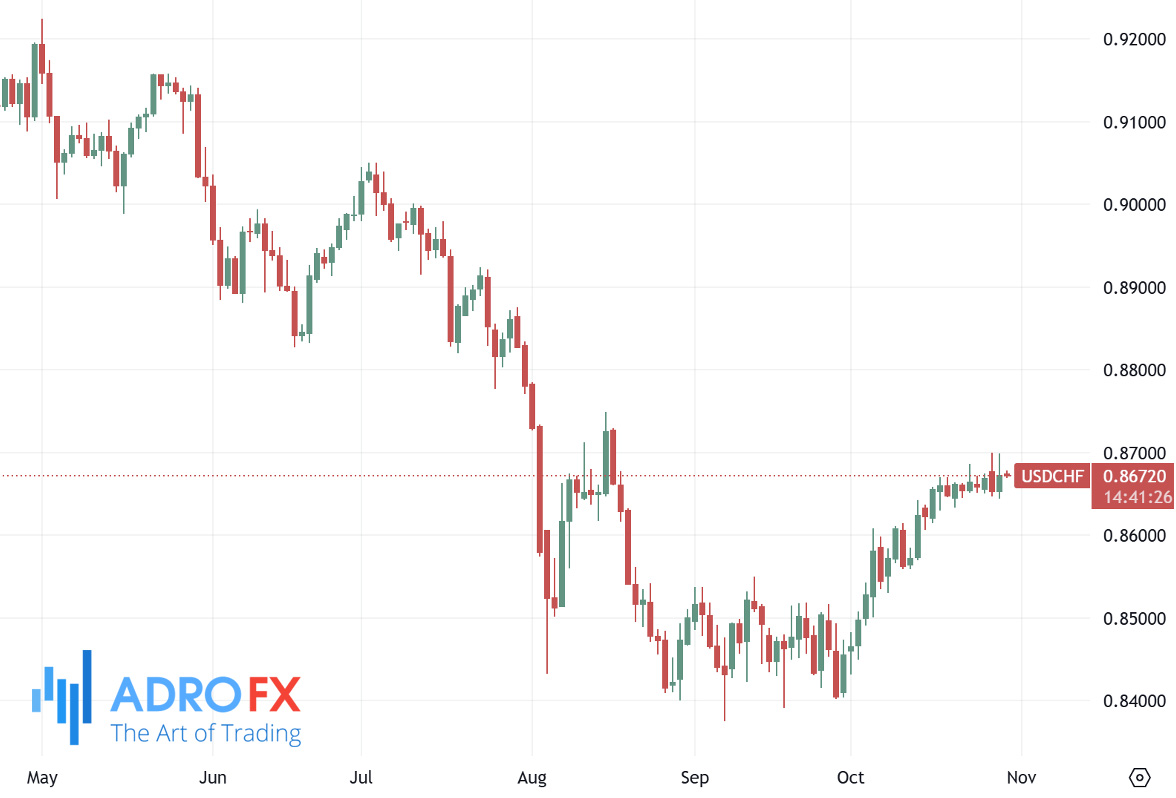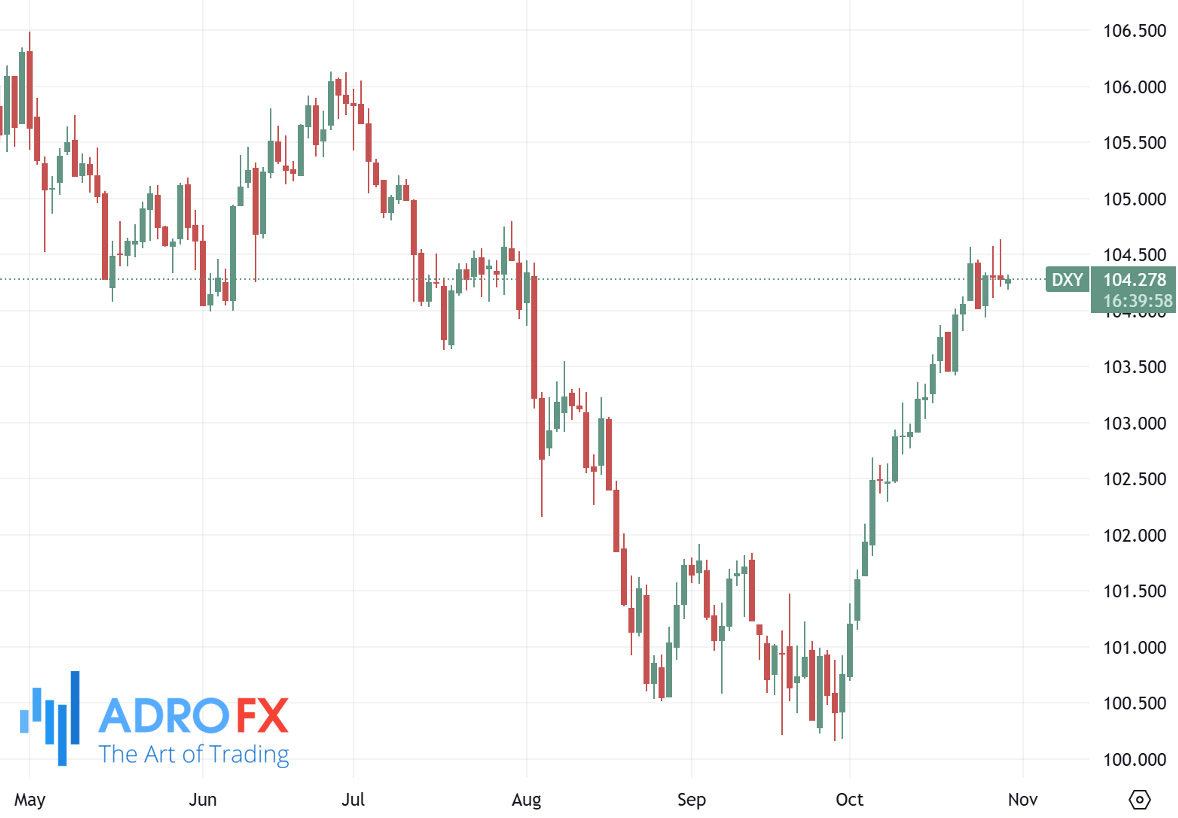Tech Earnings Drive Nasdaq to Record Highs Amid Gold Surge and Market Uncertainty | Daily Market Analysis

Key events:
- UK - Autumn Forecast Statement
- USA - ADP Nonfarm Employment Change (Oct)
- USA - GDP (QoQ) (Q3)
- USA - Crude Oil Inventories
The Nasdaq closed at a new all-time high on Tuesday, disregarding mixed economic signals as technology stocks continued their upward trend ahead of key earnings releases.
The Dow Jones Industrial Average fell by 154 points, or 0.4%, contrasting with a modest 0.2% gain for the S&P 500. Leading the pack, the NASDAQ Composite jumped 0.7%, closing at an all-time high of 18,717.58.

Large-cap tech stocks, particularly those in the "Magnificent Seven," are positioned to influence the overall market trajectory, with Alphabet reporting earnings after the close. Alphabet’s quarterly performance will set the tone for the week, followed by Meta Platforms and Microsoft on Wednesday, and Apple and Amazon on Thursday. Investors are hopeful that these tech giants will report robust results, especially after heavy investments in artificial intelligence over the past year, which could further support elevated stock valuations.
Meanwhile, gold reached a fresh high during Wednesday’s Asian trading session, driven by increased safe-haven demand. Concerns over the upcoming US presidential election and ongoing tensions in the Middle East have pushed investors toward gold, amplifying its appeal as a store of value during uncertain times. Adding to this upward trend, US Treasury yields pulled back slightly, offering additional support to the precious metal. With the precious metal climbing, analysts view gold’s rally as indicative of broader market anxieties, particularly around geopolitical risks and the potential for heightened market volatility.

In currency markets, the USD/CHF pair sustained its second consecutive day of gains, trading near 0.8670 during Asian hours on Wednesday. The dollar's strength, coupled with firm US Treasury yields, has driven the USD/CHF higher. Economic indicators are expected to play a role in the pair’s near-term direction, as investors await US Q3 Gross Domestic Product (GDP) figures and the ADP Employment Change for October, both scheduled for release later in the North American session. The Swiss Franc, a popular safe-haven currency, saw reduced demand amid signs of easing tensions in the Middle East. Reports from Axios indicate that Israeli Prime Minister Benjamin Netanyahu will soon meet with government officials, military leaders, and intelligence advisors to explore diplomatic solutions to the conflict in Lebanon, per Reuters. This development could alleviate concerns in the region and dampen safe-haven demand for the CHF.

Looking to Asia, the Japanese Yen posted modest gains against the US Dollar on Wednesday, albeit without significant follow-through. This slight uptick comes amid speculation that Japanese authorities could intervene to prevent further Yen depreciation. However, uncertainty around the Bank of Japan’s policy direction has capped gains for the JPY. The BoJ’s stance on interest rates is uncertain, particularly following Japan’s ruling coalition’s recent loss of its parliamentary majority, which could hinder any policy tightening measures. Adding to this, a global risk-on environment has limited demand for the safe-haven Yen, with investors looking ahead to the BoJ’s policy meeting and key US economic data releases for further direction. The emergence of US dollar dip-buying has also supported the USD/JPY pair, with traders anticipating that the BoJ’s decision, along with upcoming US macroeconomic data, will provide clarity on the Yen’s future trajectory.

In Australia, the Australian Dollar extended its losses against the US Dollar for the fourth consecutive day, weighed down by weaker-than-expected inflation data. The Australian Bureau of Statistics reported that the third-quarter Consumer Price Index (CPI) rose by only 0.2% quarter-over-quarter, down from 1.0% in the previous quarter. Year-over-year inflation in September was 2.1%, falling short of market expectations of 2.3% and the prior month’s 2.7%. Despite this disappointing data, the Reserve Bank of Australia is still expected to maintain a hawkish outlook, as inflation remains a key concern. This hawkish sentiment may prevent the AUD from experiencing a sharper decline, though the currency remains under pressure.

The US Dollar experienced a slight pullback as Treasury yields edged lower, although downside risk remains contained amid market caution. The upcoming US presidential election, along with critical economic releases, has investors on edge. Traders are expected to closely watch the preliminary US Q3 GDP and October ADP Employment Change, as these reports will offer insights into the health of the US economy and the potential direction of Federal Reserve policy.

With interest rate cuts anticipated in the near future, the Fed’s timeline and approach to rate adjustments will be significant for both currency and bond markets. These indicators could be crucial in shaping market expectations for the Fed’s next moves and ultimately impact the dollar’s direction.
In summary, this week's developments in tech earnings, gold prices, and key economic data releases underline the diverse forces at play across financial markets. Investors are carefully watching how earnings from tech giants and macroeconomic indicators may reshape market sentiment. With the dual influences of geopolitical risks and economic data, traders will need to monitor these dynamic elements closely as they position themselves amid heightened volatility and uncertainty.








